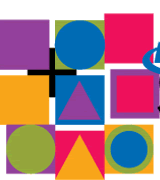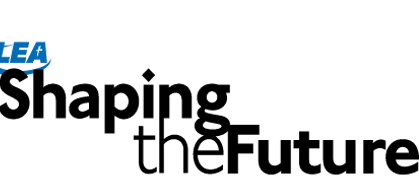From Action to Evidence:
Research in the Schools
 Faculty discussions can deteriorate to the point of being little more than a list of problems. A healthy staff will focus on possible solutions, but this can be easier said than done. Possible solutions can be found, but how can a school determine the efficacy of a solution?
Faculty discussions can deteriorate to the point of being little more than a list of problems. A healthy staff will focus on possible solutions, but this can be easier said than done. Possible solutions can be found, but how can a school determine the efficacy of a solution?
With some problems this process is fairly straightforward: experimentation. Suppose teachers had noticed that the afternoon pick-up situation was less than optimal. Perhaps it was taking too long or was creating situations unsafe for children. The staff would propose an idea (hypothesis), try it out to see how it worked (data collection), and then discuss the strengths and weaknesses of the change (analyze data). In other words the staff responds in a pragmatic, solution-focused way to make improvements.
How do schools tackle education problems such as low test scores or lack of student motivation? Schools need evidence to show what techniques, curricula, or programs have a positive effect as decisions are made in the classroom. One practice is to seek out good research.
There are several factors, however, that hinder this process:
- While thousands of education research projects are published each year, teachers and administrators do not have low-cost access to most of them.
- The problem being addressed may not have research that adequately applies.
- Internet sites such as the What Works Clearinghouse limit the research they review to only experimental studies when other kinds of research might give a better answer.
- Populations continually change. What worked for students 10 years ago might not work as well with the current group of students, yet, it can take 10 years to accumulate a body of research.
The result of generalizable research (research that is completed on a sample of a population, but through significance can be applied to the entire population) is not always the best answer for a school, a classroom or an individual. For example, medicine your doctor prescribes for high-blood pressure has undergone the rigors of research testing. Because of this your doctor can have confidence in prescribing it for you. However, if you experience side effects, or the medicine doesn’t work, your doctor will change your prescription to something else. This trial process, including collecting and analyzing data to determine the best care for your condition, is the same process schools should undergo to determine best practice for their students.
Finding research that applies to the problem your school is trying to solve is just the beginning of good practice. Like a good health care provider, you need to make sure the solution is working for your particular population. That requires a different kind of research: action research.
 So what is action research?
So what is action research?
Here are some terms that explain this concept:
Pragmatic: Action research is pragmatic in that it focuses on a problem and finding the best solution. In addition to applying formal research to your situation, action research gives you the opportunity to collect data specific to what you are studying and developing.
Local: Action research is performed in your learning community in order to accomplish on-site improvements. Through action research you can collect any data that is pertinent to the situation. The analysis of this data helps you to develop and evaluate solutions.
Transferable: In experimental research, the concern is whether or not results are generalizable to a larger population. In action research, because you are dealing with a local population, the goal is for the information to transfer to your situation and to others like it. To put it simply, it is not concerned with how well this solution works for everyone, but is concerned with how well it works for your school.
Spiral: Action research does not answer a question as much as it inspires further investigation. The process is spiral instead of linear, which means each round of research sets up further research to continue in the quest for the best way to solve the problem. For instance, in action research I completed, I developed a teacher observation tool. After trial and analysis, the process led me to rework the tool. The next step on the spiral would be to test it with a larger group of teachers and collect more data for further evaluation. Each step refines the understanding of the problem and the effectiveness of the solution.
Feasible: Action research is a formal process for what good teachers and good schools do anyway: find and solve local problems. It works well for an individual teacher in the classroom and also for a team of various people willing to put expertise and study time toward school improvement. It does not require consultation with a research expert (although in some instances this is a good idea) or a statistics computer program.
As outlined by Richard Sagor in The Action Research Guidebook, there are four basic steps to completing action research.
Clarify target: In this step the researching team identifies the problem to be studied by listing all aspects and focusing on one or two items to be addressed. For instance, if a school were looking to improve reading scores, the team might list all of the strengths and weaknesses of the current program and then narrow the focus to building comprehension skills.
Articulate theory: This step entails a thorough study of the problem and possible solutions. Here is where the team would check on current research, as well as gather local information about the problem being studied. In the comprehension skills example, a team might collect information on improving comprehension as well as administer surveys to parents on how they ask questions of their children after reading. Once this information is collected, a plan is put into place. Sometimes the plan is multifaceted; for example, a new technique for teachers, study techniques for students, as well as advice for parents for homework help.
Implement action: In this phase of the research the solution is tested and data is collected. In order to verify results, it is recommended to collect data from at least three different sources so the results can be analyzed by comparing them.1 An improvement in comprehension test scores could be verified by observations made by teachers and reports from students or parents.
Reflect and plan: The analysis of the data provides the team with information needed for the fourth step. In the action research process, the data collected typically points to a need to adapt the solution to better meet needs. This can often launch another cycle of data collection for further refining.
Action research is an excellent option for establishing evidence-based practice. The process aids in problem solving, educates, and provides defense for action taken. Additionally each action research project contributes to a data base regarding improvements and philosophy for your school, allowing teachers to systematically demonstrate methods and student progress. That matches any definition of school improvement.
is currently in graduate school at the University of Nebraska.
ENDNOTE:
1. Sagor, R. (2005). The action research gudebook: A four-step process for educators and school teams. Thousand Oaks, CA: Corwin Press.
Photos © iStockphoto.com/Bart Coenders, Cliff Parnell







